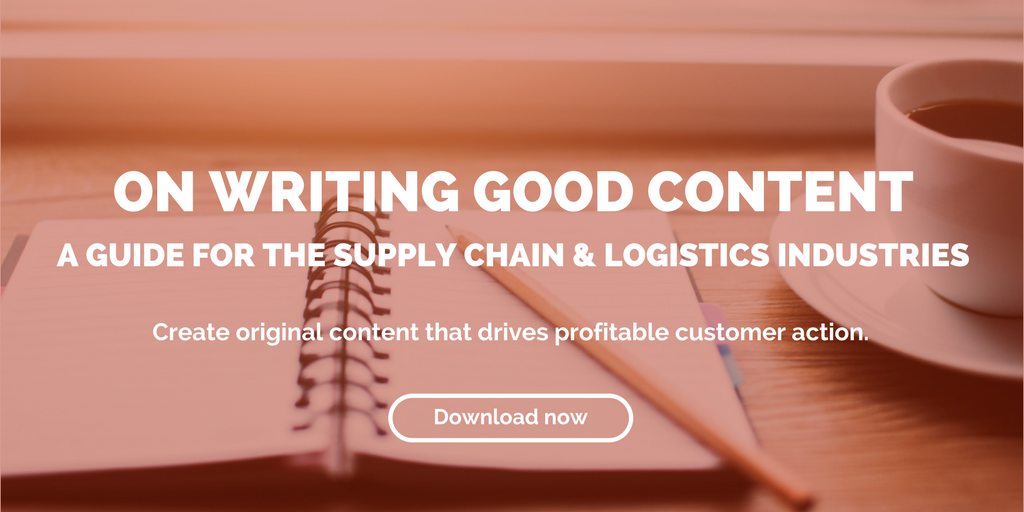
by Fronetics | Apr 11, 2019 | Blog, Content Marketing, Current Events, Logistics, Marketing, Social Media, Supply Chain
Content marketing is no longer optional. It’s essential in creating brand awareness, educating audiences, and building credibility. Here’s a look at the biggest digital marketing trends for 2019.
Highlights:
- The content marketing industry is expected to be worth more than $400 billion by 2021.
- Video is currently the most popular form of content being consumed online today.
- Peers and colleagues are the third most influential source of information for B2B purchasing, right behind online searches and your website.
A recent article by Forbes on content marketing notes: “As recently as a few years ago, marketers handled content mostly as a side project. It was more of a bonus than an essential role — something you did when you had time because it took a backseat to more traditional marketing projects and responsibilities. That’s changed.”
Boy, has that changed. The content marketing industry is expected to be worth more than $400 billion by 2021.
[bctt tweet=”The content marketing industry is expected to be worth more than $400 billion by 2021.” username=”Fronetics”]
The 2018 report from the Content Marketing Institute shows just how prevalent digital and content marketing is, and how essential it has become to creating brand awareness, educating your audience, and building credibility and trust with your customers.
Supply chain & logistics marketers: Trends to watch
So, where is content marketing headed in 2019? Marketing budgets are still on the rise, and supply chain and logistics companies are increasingly seeing the value in moving to an inbound marketing strategy driven by original content.
These are the six notable trends to consider when planning your 2019 content marketing strategy.
1. Video
Video is currently the most popular form of content being consumed online today, and video marketing will continue to have substantial value in 2019.
Smart supply chain marketers should start the new year by developing a visual storytelling strategy that offers consistent delivery of valuable content.
What’s your best bet? Be helpful and teach your audience something worthwhile to them.
2. Chatbots
The rise of chatbots – automated computer programs that simulate human conversation in messaging apps – is expected to continue in 2019. Business Insider recently reported that the number of people on messaging apps surpassed the number of users on social networks!
Chatbots are just one of the ways artificial intelligence will shape the content marketing landscape in 2019, but their ability to drastically increase customer engagement puts them on the short list for a major trend to watch in the coming year.
3. Voice search
Voice search is becoming an increasingly prevalent means of attaining information. Statistics vary, but it’s expected that anywhere between 30-50% of all searches will be voice searches by 2020. A recent report by NPR and Edison Research found that the rise of smart speakers is substantially changing consumer routines and purchasing behavior.
A good content marketing strategy for 2019 should consider how your customers might use voice search in your industry, and what you can do to maximize your content’s ability to respond.
4. Long-form content
I love this one, because it harkens back to humble beginnings of content marketing and the desire to put informative, quality content in front of a targeted interested audience.
Long form content – white papers, case studies, and lengthier blog posts e.g. – will have a resurgence of renewed appreciation in 2019. Why? Because many industries, including supply chain and logistics industries, are saturated with tons of mediocre short form content. People are increasingly looking to weed through it all for substantial quality posts from trusted sources. In addition, search engines will favor longer posts in results rankings.
Cheers to 2019 being the year of quality over quantity!
5. Brand ambassadors
We wrote about brand ambassadors as we headed into 2018, but they are worth mentioning again as we look forward to 2019. Brand ambassadors are employees that influence the B2B buying decisions of others, and they are an often-overlooked resource with more traditional marketing tactics.
Peers and colleagues are the third most influential source of information for business to business (B2B) purchasing, right behind online searches and your website! And there’s nothing more credible than a friend who speaks highly of their company’s product or service.
Definitely consider how you can help make brand ambassadors out of your employees in 2019.
6. Market Influencers
The final trend to watch in 2019 is influencer marketing, a form of marketing which focuses on influential people rather than the market as a whole.
Basically, marketers identify individuals who might have influence over potential buyers and create marketing campaigns and activities around these influencers. In many ways, this works similarly to a brand ambassador, where a single person influences their network of friends; in this case, however, the market influencer has a large network and a lot of “friends” who listen.
Influencer marketing will be a huge trend in marketing for 2019, and it would be worth considering who might be an influencer in your industry in the coming year and what your company might do reach them.
So, there you have it. As we head into 2019, these are the trends to watch and plan for in content marketing space.
The B2B buying climate is growing longer and more complex, and content marketing is so effective throughout the entire sales cycle if it’s done well. The end of the year is a great time to revisit your marketing strategy and make any necessary changes for the coming year.
This post originally appeared on EBN Online.
Related posts:

by Elizabeth Hines | Dec 6, 2018 | Blog, Content Marketing, Current Events, Logistics, Marketing, Social Media, Strategy, Supply Chain
As content marketing continues to increase in popularity, here are six trends to consider when planning your 2019 strategy.
A recent article by Forbes on content marketing notes: “As recently as a few years ago, marketers handled content mostly as a side project. It was more of a bonus than an essential role — something you did when you had time because it took a backseat to more traditional marketing projects and responsibilities. That’s changed.”
Boy, has that changed. The content marketing industry is expected to be worth more than $400 billion by 2021.
The 2018 report from the Content Marketing Institute shows just how prevalent content marketing is, and how essential it has become to creating brand awareness, educating your audience, and building credibility and trust with your customers.
Supply chain & logistics marketers: Trends to watch
So, where is content marketing headed in 2019? Content marketing budgets are still on the rise, and supply chain and logistics companies are increasingly seeing the value in moving to an inbound marketing strategy driven by original content.
These are the six notable trends to consider when planning your 2019 content marketing strategy.
1. Video
Video is currently the most popular form of content being consumed online today, and video marketing will continue to have substantial value in 2019.
Smart supply chain marketers should start the new year by developing a visual storytelling strategy that offers consistent delivery of valuable content.
What’s your best bet? Be helpful and teach your audience something worthwhile to them.
2. Chatbots
The rise of chatbots – automated computer programs that simulate human conversation in messaging apps – is expected to continue in 2019. Business Insider recently reported that the number of people on messaging apps surpassed the number of users on social networks!
[bctt tweet=”Business Insider recently reported that the number of people on messaging apps surpassed the number of users on social networks!” username=”Fronetics”]
Chatbots are just one of the ways artificial intelligence will shape the content marketing landscape in 2019, but their ability to drastically increase customer engagement puts them on the short list for a major trend to watch in the coming year.
3. Voice search
Voice search is becoming an increasingly prevalent means of attaining information. Statistics vary, but it’s expected that anywhere between 30-50% of all searches will be voice searches by 2020. A recent report by NPR and Edison Research found that the rise of smart speakers is substantially changing consumer routines and purchasing behavior.
A good content marketing strategy for 2019 should consider how your customers might use voice search in your industry, and what you can do to maximize your content’s ability to respond.
4. Long-form content
I love this one, because it harkens back to humble beginnings of content marketing and the desire to put informative, quality content in front of a targeted interested audience.
Long form content – white papers, case studies, and lengthier blog posts e.g. – will have a resurgence of renewed appreciation in 2019. Why? Because many industries, including supply chain and logistics industries, are saturated with tons of mediocre short form content. People are increasingly looking to weed through it all for substantial quality posts from trusted sources. In addition, search engines will favor longer posts in results rankings.
Cheers to 2019 being the year of quality over quantity!
5. Brand ambassadors
We wrote about brand ambassadors as we headed into 2018, but they are worth mentioning again as we look forward to 2019. Brand ambassadors are employees that influence the B2B buying decisions of others, and they are an often-overlooked resource with more traditional marketing tactics.
Peers and colleagues are the third most influential source of information for business to business (B2B) purchasing, right behind online searches and your website! And there’s nothing more credible than a friend who speaks highly of their company’s product or service.
Definitely consider how you can help make brand ambassadors out of your employees in 2019.
6. Market Influencers
The final trend to watch in 2019 is influencer marketing, a form of marketing which focuses on influential people rather than the market as a whole.
Basically, marketers identify individuals who might have influence over potential buyers and create marketing campaigns and activities around these influencers. In many ways, this works similarly to a brand ambassador, where a single person influences their network of friends; in this case, however, the market influencer has a large network and a lot of “friends” who listen.
Influencer marketing will be a huge trend in marketing for 2019, and it would be worth considering who might be an influencer in your industry in the coming year and what your company might do reach them.
So, there you have it. As we head into 2019, these are the trends to watch and plan for in content marketing space.
The B2B buying climate is growing longer and more complex, and content marketing is so effective throughout the entire sales cycle if it’s done well. The end of the year is a great time to revisit your marketing strategy and make any necessary changes for the coming year.
Best wishes in the year ahead!
This post originally appeared on EBN Online.
Related posts:


by Fronetics | Oct 16, 2018 | Blog, Content Marketing, Logistics, Marketing, Social Media, Strategy, Supply Chain
Optimally, content and sales have a symbiotic relationship. But the key is understanding what kind of content your sales team needs to help them close deals.
A theme I’ll be examining in this space over the next few months is how content marketing can help businesses make sales. Content marketing and sales are not mutually exclusive functions. Content can help sales teams get meetings, build relationships, and close deals. So what kinds of content can the marketing staff develop to support sales?
First impressions
Sales reps know that first impressions are a one-time opportunity, and all-important for ushering prospects into the sales funnel. For the initial contact with a prospect, content can be a major asset, particularly personalized content. For example, take the time to familiarize yourself with the latest blog posts from target companies’ websites, and follow up with additional ideas they can leverage.
Additionally, to create a positive first impression, host a live workshop that caters to the needs of your prospects. Hubspot’s Bethany Cartwright suggests an event “that walks through industry best practices and helps troubleshoot common issues.” She also recommends that content marketing teams “build custom landing pages that populate the prospect’s name, company logo, and value props catered to their business needs.”
Turning around an initial rejection
One of the biggest, often insurmountable challenges for a sales team is receiving an initial “no” from a prospect. But with the help of content marketing, sales teams can often get past an initial rejection and turn it around. “Leveraging content doesn’t mean just leveraging your own content,” says Cartwright. “In ‘no’ situations, you can turn the tables and talk to prospects about their content instead.”
[bctt tweet=”The basic idea behind content marketing is that your business’ greatest asset is your knowledge and expertise, not your products and services. ” username=”Fronetics”]
We’ve said it before, and we’ll keep saying it: the basic idea behind content marketing is that your business’ greatest asset is your knowledge and expertise, not your products and services. When it comes to the intersection of content and sales, this idea holds true more than ever. Your best shot at turning around an initial “no” from a prospect is to offer them something of value aside from products. Content helps you build relationships with your prospects, which is your best shot at turning them into customers.
Middle and bottom of the funnel content
Once your sales team has successfully ushered prospects into the sales funnel, the role of content doesn’t go away. At these later stages of the buyer’s journey, content like case studies, implementation guides, and data sheets are of great value. On average, B2B businesses lose around 20% of their customers each year by neglecting customer relationships. These types of content can help cultivate a budding relationship with your prospects, keeping them loyal and engaged.
At these later stages, keep content as visual as possible. This is an ideal time to create and share infographics with your prospects, for example. Video also performs exceptionally well in the late-stage sales cycle. Include short video clips in follow-up emails, particularly video case studies or animated product demonstrations. And don’t forget to keep it personalized. Vidyard is an excellent tool for personalizing video messages to your prospects.
Content, when used effectively, is your sales team’s best friend. Keeping your marketing and sales teams aligned and working closely together is your best bet for generating and nurturing leads, and turning them into customers with a lasting and fruitful relationship.
Related posts:


by Fronetics | Mar 8, 2018 | Blog, Content Marketing, Logistics, Marketing, Strategy, Supply Chain
Use these 4 steps to determine the topic clusters that will be best for driving organic traffic to your business’ website.
You’ve determined your pillar content and written your pillar pages. Now what? It’s time to develop topics clusters.
Topic clusters show search engines that your website contains breadth and depth on a particular subject, which will help them decide to show your page over others in a user’s search for that subject.
Determining what topic clusters to use can be overwhelming — as can figuring out how to optimize blog posts that contain cluster content. Let’s take a step back and think a little about what a topic cluster is.
HubSpot Academy has a great succinct summary: “Topic clusters are comprised of a pillar page and subtopic content that you’ve compiled for each of your core topics.”
So how do you go about developing topic clusters? We’ve put together a four-step guide to get you started.
4 steps to developing topic clusters
1) Choose your topic.
This is all about determining where you can or strive to be a thought leader. Pick topics that are fundamental to your business, places where you can be a resource for potential buyers and industry peers. Define these topics with a name that summarizes the content it will address.
Chances are, you’ll have some supporting content already. Conducting a content audit will help you determine how much you have in place already.
2) Compile subtopics.
HubSpot recommends having “6-8 subtopics that address specific questions your customers may be exploring related to the core topic of your pillar page.” Other sources recommend between 10-20 subtopics. It depends on how broad your main topic is. (But if you can come up with more than 20 subtopics, your topic is definitely too broad!)
Conduct a brainstorming session with your team to think about relevant content that your target buyers would seek out when researching products and solutions.
Simple Marketing Now blogger Christine B. Whittemore suggests starting with identifying the problems your buyer persona faces. “Map out 5-10 core problems that your core persona has. Use research… to truly understand your buyer persona problems, including the world used to describe them.”
3) Develop pillar pages.
Now that you have a list of topics and subtopics, you need to develop your pillar pages. These pages will extensively — and broadly — cover each main topic, and they will include links to each subtopic.
Inbound Marketing Specialist Sarah Seward suggests using “relevant pictures, high-quality and interesting content, compelling headers, and any additional, related resources, such as a custom graphic visually demonstrating your expertise on a topic.”
4) Create!
Now it’s time to create your content (or brush up existing content you discovered in your audit). Be sure to link pages covering your subtopics to your pillar pages, using the correct anchor text. That means hyperlinking words that are relevant to the topic and subtopics.
Additionally, you can link subtopics together where appropriate. The more often you can create relevant links, the better.
Now repeat this process until you’ve created several topic clusters that best define your business. This SEO strategy will help ensure that prospective customers that are searching for products or services like yours will be more likely to visit your website and patronize your business.
Related posts:


by Jennifer Hart Yim | Dec 21, 2017 | Blog, Strategy
Resumes are hard. Always have been, always will be. It’s hard to write and talk about yourself. It’s even harder to boil years – or even decades – of experience and accomplishments into a few short pages of text and visuals.
This guest post comes to us from Argentus Supply Chain Recruiting, a boutique recruitment firm specializing in Supply Chain Management and Procurement.
You’re probably more focused on your job than keeping a resume updated, and if a few years pass in between the times when you need a resume, you often find that resume trends have changed, and it’s hard to know how to format it, what to include, and what to leave out. It’s easy to feel lost because, of course, resume writing is one of the toughest tasks of any professional.
Let’s revise that slightly: it’s easy enough to write any old resume, but it’s difficult to craft a document that actually boosts your credibility.
A recruitment firm like Argentus is something of a resume clearing house. We see them all: the good, the bad, and the ugly. We see resumes that have up-to-the-minute style, as well as resumes where we have to brush off the cobwebs as we double click on the attachment in our inbox. We’re frankly bored of the latter. That’s why we’re doing a new miniseries on the Argentus blog, called The Quest for a Better Resume. We’re going to dive into some key aspects of resume writing and give examples to help you craft a resume that wows hiring managers and, hopefully, us!
In the first installment of this series, we gave some tips for boosting your resume’s style, which is something that sadly doesn’t get enough attention in fields like Supply Chain and Procurement.
Today, we’re going to dive into the Content side of things and help answer: if you’re a professional in Procurement, Supply Chain, or any of their related fields, what exactly should go on a resume and what doesn’t belong there?
Read on to hear our advice!
Resume Content:
Supply Chain and Procurement professionals make their careers by extracting relevant insights from complex sets of data. So it makes sense that they’re often skilled at loading their resumes up with valuable content – even if their resumes lack visual panache. The resumes we see tend to be stronger from a content perspective than an optics perspective – but there are still common shortcomings in terms of what people choose to write on a resume.
So when it comes to content, what does a bad resume look like?
Obviously, the worst resume is one that doesn’t show that the candidate has any relevant experience, or one that misrepresents that experience. But let’s take it for a given that you’re a professional with a solid background, trying to communicate the breadth of skills and work experience that you’ve accumulated:
- A bad resume tends to be overly stuffed with buzzwords. It tends to talk a lot without actually saying anything, full of words like “self-motivated,” “detail-oriented,” “team-player” – qualities that you shouldn’t have to put on a resume. These kinds of qualities are “table stakes” for getting an interview. They should be self-evident when the hiring manager speaks to you in person – on a resume, they come across as empty.
- It might tend to contain irrelevant experience, or show a lack of focus. This flavor of resume tries to be all things to all people – the resume equivalent of the job seeker who applies to every job we have, without tailoring their resume to one particular niche. We get that often people do have a wide variety of experience – some professionals at the director or VP-level have touched on every aspect of the Supply Chain, from inventory management to procurement to distribution. But you should tailor your experience to the role for which you’re applying.
- It talks about “duties fulfilled” instead of accomplishments. We’ve blogged a lot about how important it is to create an accomplishment-based resume. Bad resumes tend to read like job descriptions instead of describing what the person has delivered to their employers.
- It has extra info that isn’t relevant. Trends are always changing in terms of what info your resume should (and shouldn’t) include, and it can be hard to keep up. But as of late 2017, headshots, marital status, personal info, and links to multiple social media profiles are distractions from what’s important.
With these common shortcomings in mind, what approach should Supply Chain and Procurement professionals take when trying to write a resume that impresses?
- Show, don’t tell. This old writer’s adage is also the best rule of thumb both for avoiding buzzwords and packing your resume full of impressive accomplishments instead of squandering the precious few seconds that a hiring manager will dedicate to your resume. Don’t just say that you’ve “increased cost savings,” show the amount of money that you’ve saved, and how you did it. Speak in terms of numbers: how many people did you oversee? What size of budget were you responsible for? Don’t just say you have “exceptional communications skills,” show it by presenting a resume that’s concise.
- Include the meat, not the fat. As recruiters in Procurement and Supply Chain, there are a few pieces of vital information we’re looking for when assessing a resume – beyond the accomplishments we mentioned above: if you’re in Supply Chain, what aspects have you touched on? (e.g. inventory management, logistics, warehousing, distribution, sourcing). What software do you have experience and skills with? (e.g. SAP, ARIBA). If you’re in Procurement, what categories have you purchased in? (e.g. raw materials, information technology, marketing, etc.) This is key information that sometimes gets lost within long bullet-pointed lists of “duties.”
- Less can be more. Similar to how white space is important from a visual perspective, concision is key when it comes to content. Try to write your resume with more action verbs and fewer adjectives.
If you’re like us, you’ve probably noticed that a lot of the resume advice floating around the internet is distressingly general – shouldn’t it be obvious that resumes need to avoid typos, grammatical mistakes, and incorrect contact information? So hopefully these tips give a bit more detail about how to approach a resume’s content in a blue-sky way.
Related posts:










